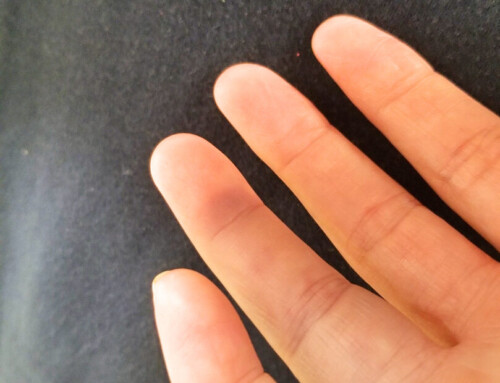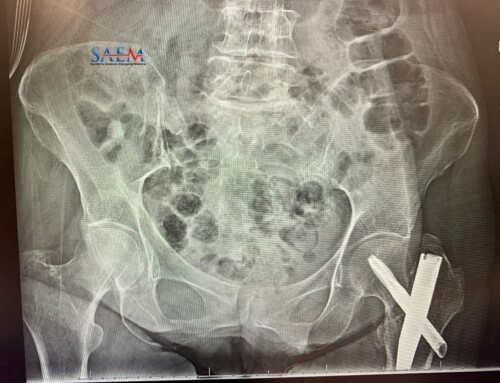A 41-year-old male presents with left-hand pain after an altercation. The patient’s hand is noted to be swollen and tender, particularly over the 4th-5th metacarpals, with mild swelling extending to the 4th-5th digits. The patient also notes that he slightly deformed his wedding ring during the fight and he has since been unable to remove it. It’s a busy overnight and the patient has been in the waiting room for an hour. While waiting nursing staff had the patient ice his hand while elevated and attempted to remove the ring with a water-based lubricant. All attempts to remove the ring thus far have been unsuccessful.
Trick of the Trade: Windex for Ring Removal
Problem: Ring removal
Ring removal can be challenging. It is frequently encountered in the setting of trauma, and associated with swelling and tenderness of the affected digit.
Many different methods for ring removal have been described [1]:
- Destructive Techniques: ring cutters
- Ring Preserving Techniques
- Finger tourniquet technique
- Elastic band method
Trick: Windex
Here we describe successful ring removal with Windex. The patient’s hand and 4th digit were notably tender; he was apprehensive about either finger wrapping technique considering superficial ulcerations forming on his finger from the previous ring removal attempts. The patient was also adamantly opposed to further damage to the ring via ring cutters.
A quick Google search indicates that jewelers (and likely the father in My Big Fat Greek Weeding) commonly use Windex for ring removal. Windex happened to be present in the emergency department as staff have been using it to clean off goggles and face shields during the COVID-19 pandemic.

Technique:
Our case: Windex was applied to the patient’s 4th digit and with gentle manipulation, twisting, rocking, and traction the ring was easily removed.
Some pearls:
- Consider performing a digital block prior to manipulation
- Consider use of Windex as an adjunct to other ring preserving techniques
Discussion: Why does Windex work?
There is no literature describing Windex’s use as a ring removal agent. Windex is a water-based glass cleaner composed of multiple surfactants (2-Hexoxyethanol, Lauryl Dimethyl Amine Oxide, Sodium Dodecylbenzene Sulfonate), which reduce surface tension. We surmise that these surfactants reduce the surface tension between the ring and the patient’s skin, likely generated from sweat and trace edema. We suggest the use of Windex as a primary or adjunctive agent for ring preserving removal techniques.
What do you think about this technique? Any more pearls or suggestions?
Check out more ALiEM Tricks of the Trade.
References:
- Asher, Christian et al. Ring removal: an illustrated summary of the literature. Eur J Emerg Med. (2019). PMID: 31850973






